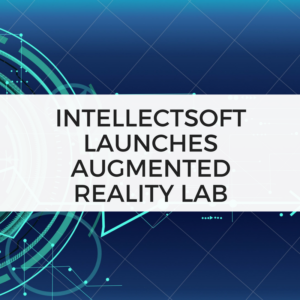“You cannot wait until a house burns down to buy fire insurance on it. We cannot wait until there are massive dislocations in our society to prepare for the Fourth Industrial Revolution.” These are the words of Robert J. Shiller, 2013 Nobel laureate in economics and Professor of Economics at Yale University.
Enterprises and their competition are being radically reshaped because of intelligent and connected products and people, embedded as a part of broader systems. The Fourth Industrial Revolution characterized by a combination of physical and advanced digital technologies such as internet of things, Artificial Intelligence, Intelligent Robots, ubiquitous, mobile supercomputing, Information Management and Analytics, has a huge impact across industries. Coming on the footsteps of internet and computers (Industry 3.0), electricity and mass production (Industry 2.0) and the steam engine (Industry 1.0), the opportunities that this presents is significant, still evolving and perhaps not fully envisioned. To be successful, enterprises need to shift from just selling products to creating a relationship model built around creating deeper connections with their ecosystem of suppliers, customers, machines and employees.
Several industries are at the forefront of the innovations that these technologies bring. In this edition, we examine four industries who are driving these innovations from the front, resulting in causing significant change in terms of the way they work.
Manufacturing: With the wealth of ‘as a service’ buzzwords, perhaps what manufacturing segment could look forward to as a part of Industry 4.0 is ‘machine as a service’. Every dollar of capital investment and maintenance in a machine must drive business revenue. The investment in the machine is directly dependent on its ability to deliver its KPI’s (being the output). Industry 4.0 technologies enables real time condition monitoring from machine and sensor data. The data is evaluated using highly customized rules and analysis and enables triggering of notice of upcoming maintenance or alerts in case the data falls outside the standard range of tolerance. Likewise, unscheduled maintenance stoppages are also immediately displayed, and notifications are sent. The software then passes on the maintenance ticket to the most appropriate technician with all the relevant information related to the issue. Parts are ordered and data from nearby machines is reviewed to allow production re-routing to other machines during the downtime. Once the issue is resolved, event notification informs the customer and the billing takes place.
Other key manufacturing use cases include enterprise wearables during the manufacturing process including training, additive manufacturing (to build three dimensional objects from a digital blueprint or model), robotics for better floor space utilization and higher productivity as well automated purchasing, digitalization of product design, personalization of products, collaboration of multiple partners in the value chain, advanced sourcing, transportation and inventory modelling.
Distributed manufacturing is becoming possible with the adoption of advanced manufacturing technologies. The idea driving this is to locate production facilities that are closest to the customer and to integrate the customer more effectively into the manufacturing process to reduce lead time and cost.
Retail and Consumer Goods (R&C): R&C companies are being driven by changes in consumer preferences, barriers to entry, supply chain and logistics strategies and marketing strategies. Retail organizations are focusing to digitize their value chains right from planning and allocation to last mile delivery. Advanced real time in-store inventory management, real time information and predictive analytics for planning and allocation, end to end transparency on product availability, seamless channel integration and transparency on quality and origin will help enterprises differentiate in the market.
Logistics and Transportation: This industry is perhaps seeing some of the biggest innovations in several decades. In the Hannover Messe 2018 (one of the world’s largest trade fairs), cobot (collaborative robot), AI and Logistics were the key technological highlights. While cobot itself is not a new concept and perhaps existing since 1995, it is now finding its place in terms of wide applications in multiple industries. While a classic robot is expected to function autonomously, the cobot is expected to work together with people and assist them with complex tasks that cannot be fully automated. The cobot has seen several applications in the warehousing, transportation and fulfillment industry. IDC stated that by 2018, “30% of all new robotic deployments will concern smart cobots that operate three times faster than current robots (with ‘current’ being end 2016) and are safe for work around humans”. IDC also stated that “By 2018, 45% of the 200 leading global ecommerce and omni-channel commerce companies will deploy robotics systems in their order fulfilment warehousing and delivery operations”.
Industry 4.0 solutions in this industry will drive significant improvements in supply chain visibility, integrity control of the supply chain (rights products at the right place and right costs), dynamic reconfigurability of the supply chain by using the most optimal combination of supply chain network providers and achieving lean and green supply chain outcomes.
Automotive: The automotive industry is making a dynamic shift with Industry 4.-0 technologies by leveraging the connectedness of machines and people. This has allowed them to build agile supply chains to quickly adapt manufacturing specifications to changing standards (such as say fuel regulations), smart connected assembly solutions to increase uptime, reduction in defects and improved productivity, equipment reliability for 24-hour production, contractor integration and ability to deliver personalization of vehicles based on customer demand.
With solutions like Blockchain, several automakers have created a distinctive ID for every part, together with immutable timestamps from when the part is created. This is expected to significantly bring down the phony auto parts which are inferior causing damage to the automaker’s brand. Again, blockchain is being put to use to ensure that there is transparency to banks when there is sale of vehicles by automotive dealers. This is intended to bring down frauds because of not reporting this sale by the dealer, to benefit from additional working capital.
The possibilities with machine to machine (M2M) is huge. With M2M, several stakeholders including energy providers, automakers, parts suppliers and car owners have full visibility to the vehicle data and even use this to create / launch new products and services.
Alvin Toffler in his book Future Shock (1970) posited that “The illiterate of the 21st century will not be those who cannot read and write, but those who cannot learn, unlearn, and relearn”. The future of work is continuous learning. No company, no industry and no job is immune from it. Massive value awaits those companies who adopt the right strategy roadmap in their Industry 4.0 initiatives. To be successful enterprises must ensure to invest in continuous change management and learning initiatives for their teams, to accelerate the adoption and pace of change.
Original article source.









